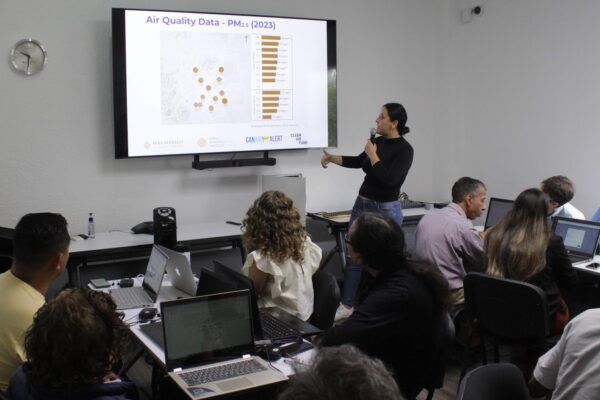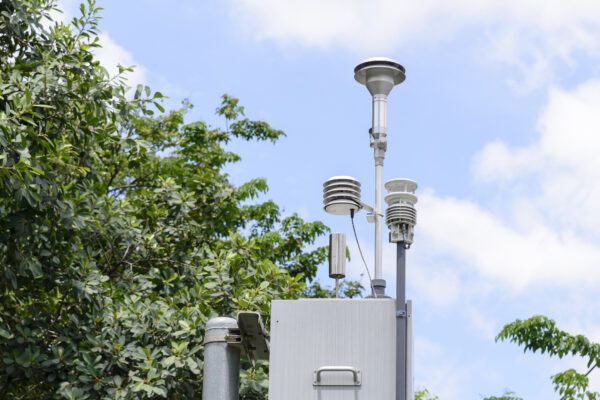At Clean Air Fund, we’re driven by the conviction that empowering individuals with comprehensive data on clean air and its health implications can make a substantial contribution to global efforts for cleaner air.
With air monitoring technology advancing swiftly, organisations worldwide are investing in air quality measurement devices. As more air quality monitoring devices are deployed, the amount of data being generated every minute and second has grown exponentially.
Measuring the levels and sources of air pollution is the critical first step to smarter, evidence-informed action on clean air. Yet, effectively managing the resulting data has become a complex challenge, requiring significant time and resources.
The data management challenge
Managing air quality data requires a unique blend of skills, involving air quality expertise, software development, information systems, and operations. This often consumes substantial portions of project budgets and diverts attention from taking action to improve air quality, including health protection and pollutant reduction actions.
Generating data is merely the beginning; skilled handling and efficient utilisation of this data are equally crucial. There is an exponential growth in data volume, but there is also a decline in data quality. This dual challenge stresses the critical need for systems that preserve data quality and enhances its fundamental value for decision making.
A data management system (DMS) streamlines data collection, harmonisation, quality control, and visualisation to enable informed decision-making. As we enter an era dominated by data-driven insights, the practice of air quality data management needs to be rethought.
Current state of the DMS landscape
Existing DMSs like the US Environmental Protection Agency’s Air Quality System (AQS) and the European Air Quality Information and Monitoring Network (AirInMed) have improved air quality monitoring by automating data collection processes and making data storage and management more accessible. However, these and other systems are outdated and not ready to manage the amount of new data collected from the proliferation of air sensors, lower cost and more widely available monitoring technology.
To address this issue, cities and organisations around the world face a dilemma: whether to construct their own DMS or subscribe to private vendors’ solutions.
Private solutions tend to be expensive and lack transparency and accessibility, hindering public and community access to critical information. Instead, organisations feel compelled to allocate vast funds to building their own customised data management systems, which are often burdened with unnecessary components.
This constant reinvention of DMSs means that precious resources are not used to interpret the data or take action on resulting analyses. This drain of resources ultimately diverts funding from improving air quality and duplicates efforts. Given the limited global funding for clean air initiatives, it’s crucial to break this repeating cycle.
What are the key benefits of DMS?
- Collaboration: A well-designed DMS serves as a hub for storing and accessing air quality data, promoting collaboration and data exchange across systems.
- Efficiency and resource savings: Automation of processes reduces time and resources spent on manual tasks, allowing organisations to focus on actionable analysis.
- Data quality improvement: DMSs often include features ensuring data quality and accuracy, enhancing the reliability and application of insights.
- Enhanced Data Sharing: User-friendly DMSs facilitate data sharing, fostering collaboration among stakeholders.
An open-source solution for a collaborative movement
Recognising the demand for an effective, cost-efficient, and user-friendly remedy, organisations are turning to open-source solutions. This approach offers advantages, such as reduced costs, improved accessibility, and collaborative development for the clean air movement. Importantly, open-source systems cater to diverse user groups, accommodating specific requirements and facilitating code and methodology exchange.
An open-source DMS holds the potential to enhance data access in urban settings across the world. This means air quality data would be high quality, timely, and accessible across organisations, borders and communities. Imagine a scenario where the clean air community embraces an open-source DMS, redirecting funds from repetitive endeavours to initiatives driving genuine progress.
Building a strong DMS with a community
The success of a DMS extends beyond its technological components. A robust and collaborative community to develop and maintain an open-source system is essential. Rather than constructing a DMS for the community, we propose working with the community to build it, encouraging contributions, and making it the best it can be. This approach not only fosters innovation but also ensures sustainability.
For an open-source DMS to be sustainable, a community of practice must thrive and collaborate, helping low- and middle-income countries and academia use the open prototype and advocating for cost-effective features. This will expand the reach and support of the community of practice, ensuring the sustainability of the open-source DMS.
The true transformation lies not just in data collection but in our ability to organise and analyse it for meaningful insights. This aligns with Clean Air Fund’s vision to make a substantial difference in global efforts to improve air quality. Establishing an open-source DMS bridges the gap between data generation and evidence-informed action, ushering in an era of effective air quality management.
Resources
The scoping study was done in collaboration with with TD Enviro and partners at the University of Massachusetts Amherst and Valiant Solutions to investigate the current global DMS landscape, understand the need for and interest in DMS.
Explore the report findings here [PDF] or watch the video below:
See more

